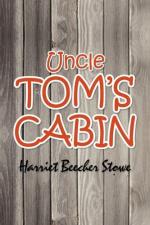|
This section contains 1,412 words (approx. 5 pages at 300 words per page) |

|
SOURCE: "The Virtuous Victim: Les Misérables, Billy Budd, The Power and the Glory, Uncle Tom's Cabin," in The Poetics of Protest: Literary Form and Political Implication in the Victim-of-Society Novel, Southern Illinois University Press, 1985, pp. 51-86.
In the following excerpt, Goodin discusses the characterization of Tom and the ending of the novel in relation to themes of resistance and community.
As [Stowes] title ought to suggest, [Uncle Tom's Cabin] is largely the story of a community. According to Stowe's 1878 essay "The Story of Uncle Tom's Cabin" the novel's animus was the Fugitive Slave Law of 1850, which required even the citizens of the Free North to consider slaves merely as property by turning them in if they escaped from their masters. Its germ was a story about a young slave woman who escaped with her child by leaping from one ice floe to another on the Ohio River...
|
This section contains 1,412 words (approx. 5 pages at 300 words per page) |

|


